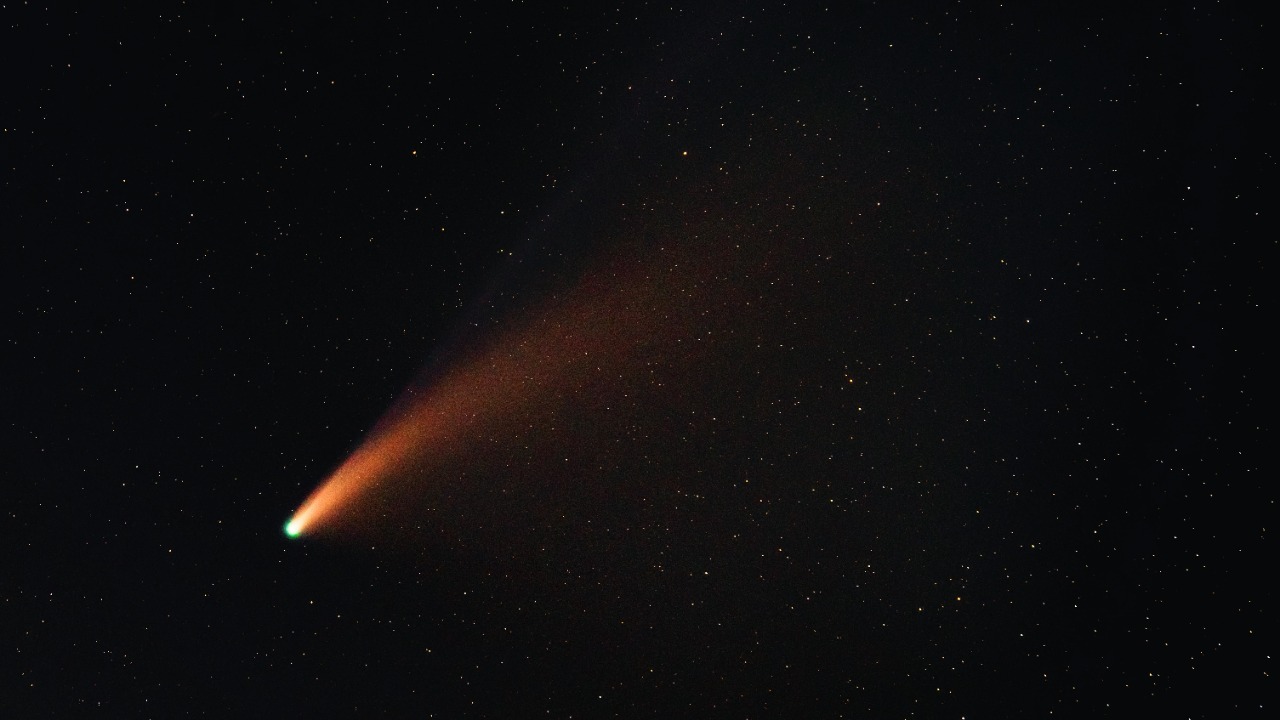
On October 21, 2025, skywatchers in Scotland were treated to a breathtaking celestial event as the superbright Comet Lemmon made its way through vibrant auroras during an unexpected solar storm. This rare alignment of cosmic phenomena illuminated the night sky, with the comet’s intense brightness cutting through the colorful northern lights. The event underscored the fascinating interactions between comets and solar activity, offering a unique spectacle for those fortunate enough to witness it.
Comet Lemmon’s Characteristics and Path
Comet Lemmon’s recent proximity to Earth significantly enhanced its visibility, making it a standout feature in the night sky. Its superbright appearance was due to its composition, which includes volatile ices that vaporize and reflect sunlight as the comet approaches the sun. This reflective quality allowed Comet Lemmon to shine brightly against the backdrop of the auroras, creating a striking visual contrast. As it traversed the auroral zone, the comet’s path aligned perfectly with the auroras over Scotland, offering a rare opportunity for observers to see the comet intersect with the vibrant light display. The trajectory of Comet Lemmon was particularly noteworthy as it passed through the auroral zone, a region where the Earth’s magnetic field interacts with solar winds to produce auroras. This alignment on October 21, 2025, was a fortuitous occurrence, as the comet’s path coincided with the heightened auroral activity caused by the solar storm. The comet’s composition, rich in reflective materials, contributed to its brightness, making it a prominent feature in the sky during this event.
The Surprise Solar Storm’s Impact
The solar storm that occurred on October 21, 2025, was marked by a sudden coronal mass ejection (CME) that disrupted Earth’s magnetosphere. This unexpected solar activity intensified auroral displays, extending their visibility to mid-latitudes like Scotland, where such phenomena are less commonly observed. The storm’s geomagnetic disturbances not only enhanced the auroras but also posed potential risks to technology, including power grid fluctuations and disruptions in satellite communications. The impact of the solar storm was felt beyond the visual spectacle, as the geomagnetic disturbances had implications for both technology and weather. Power grids, particularly in regions closer to the poles, faced the risk of fluctuations due to the increased geomagnetic activity. Additionally, the storm’s effects on satellite operations highlighted the broader challenges posed by such solar events, emphasizing the need for continued monitoring and preparedness in managing technological infrastructure during periods of heightened solar activity.
Auroras Over Scotland: A Rare Spectacle
The auroras observed over Scotland during the solar storm were a vivid display of colors and patterns, amplified by the energy influx from the solar activity. Eyewitnesses reported seeing a range of hues, from deep greens to vibrant reds, dancing across the sky. These auroras, typically confined to higher latitudes, were visible much farther south than usual, providing a rare opportunity for residents and visitors in Scotland to experience the northern lights in all their glory. Eyewitness accounts from various locations in Scotland highlighted the prominence of the auroras on October 21, 2025. Observers described the sky as being alive with movement and color, a testament to the power of the solar storm’s influence. The unusual southern reach of the auroras was attributed to the intensity of the solar storm, which allowed the lights to be seen by a wider audience than typically possible. This accessibility brought the wonder of the auroras to many who might not otherwise have the chance to witness such a spectacle.
Capturing the Comet-Aurora Alignment
Photographic evidence of Comet Lemmon intersecting the auroras provided a stunning visual record of the event. Astrophotographers in Scotland employed various techniques to capture the comet’s trail amid the vibrant lights, using long exposure settings to highlight the interplay between the comet and the auroras. These images not only documented the beauty of the moment but also offered valuable data for scientists studying the interactions between comets and solar phenomena. The techniques used by photographers to document the event were crucial in capturing the fleeting alignment of the comet and auroras. By utilizing long exposures and strategic framing, photographers were able to showcase the comet’s bright trail against the dynamic backdrop of the auroras. These images serve as a testament to the skill and dedication of those who seek to capture the wonders of the night sky, providing both aesthetic enjoyment and scientific insight into the complex interactions at play. The scientific value of these images extends beyond their visual appeal, offering insights into the behavior of comets as they interact with solar activity. By analyzing the photographs, researchers can gain a better understanding of how comets respond to the solar wind and other space weather phenomena. This knowledge contributes to the broader field of space science, enhancing our understanding of the dynamic processes that shape our solar system. Comet Lemmon’s journey through the auroras over Scotland was a remarkable event that captivated observers and highlighted the intricate dance between celestial bodies and solar activity. The combination of the comet’s brightness and the unexpected solar storm created a unique opportunity to witness the beauty and complexity of our universe, reminding us of the ever-changing nature of the cosmos.